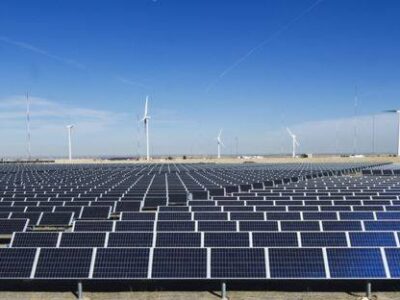The International Energy Agency (IEA) reported in October 2022 that global emissions were expected to grow by less than 1% last year, thanks to the ongoing transition to renewables. It’s a sign that the world is embracing the battle against climate change and countries are willing to make significant policy changes to mitigate the effects of global warming.
The IEA estimated that CO2 emissions in 2022 would rise by 300 million tons. While that number might seem daunting, it’s a massive decline from the 2 billion tons produced in 2021. Even as fossil fuel burning continued, deploying clean energy generators and electric vehicles (EVs) significantly offset the emissions rate.
EV orders were even higher than the demand for coal. If sustainable energy programs had not expanded rapidly in the past year, there could have been a 1 billion ton increase, triple the current IEA estimates.
Much of the rise in emissions was due to the aviation industry, which is still in its post-pandemic recovery. Even so, the possibility of renewables as a nation’s main power source is trending upward.
Some major geopolitical events fueled this concerted effort to clean resources, claims Fatih Birol, IEA executive director, notably the Russia-Ukraine conflict.
“The global energy crisis triggered by Russia’s invasion of Ukraine has prompted a scramble by many countries to use other energy sources to replace the natural gas supplies that Russia has withheld from the market,” Birol said. “The encouraging news is that solar and wind are filling much of the gap, with the uptick in coal appearing to be relatively small and temporary.”
When Consensus reached out to the IEA for comment, the organization doubled down on this stance. Even with some countries like Germany turning back to coal when they ceased importing Russian gas, a minimal climate effect seems likely alongside a more wide-scale embracement of renewables. There will likely be more expansion of solar photovoltaic and offshore wind farms as the primary power generator for countries that have been on fossil fuel standards.
Solar and wind were the leaders in global sustainable electricity generation. The two most common forms generated more than 700 terawatt-hours of power, the largest annual increase of renewables on record. For perspective, 700 terawatt-hours can run 67 million American homes annually without carbon emissions.
Hydropower is also making a comeback, even with some drought concerns in Europe and North America.
It contributed up to one-fifth of the global renewable energy total. Birol credits national leadership as the impetus for this slower CO2 emission growth.
“CO2 emissions are growing far less quickly this year than some people feared — and that policy actions by governments are driving real structural changes in the energy economy,” he said. “Those changes are set to accelerate thanks to the major clean energy policy plans that have advanced around the world in recent months.”
The planet isn’t just feeling the effects of renewables. Governing bodies are saving large sums of money by ditching oil and gas for solar, wind, hydro, nuclear, and geothermal power. The European Union is expected to save around 99 billion euros, or $97 billion, in costs thanks to the detachment from Russian gas.
The switch to EVs will benefit the U.S. exponentially given the EPA counts transportation as the biggest contributor to America’s emission problems. The Inflation Reduction Act is poised to greatly spur more Americans’ interest in purchasing an electric vehicle. The hope is the tax benefits granted to EV ownership and transitioning to sustainable power sources will drive emission rates down, ideally before the end of the decade.





